Did you know that 93% of consumers make purchasing decisions based on visual appearance alone?
That’s not just a statistic, it’s the secret weapon hiding in plain sight! As a dropshipping entrepreneur,
I’ve witnessed firsthand how the right color choices can transform a struggling store into a conversion machine.
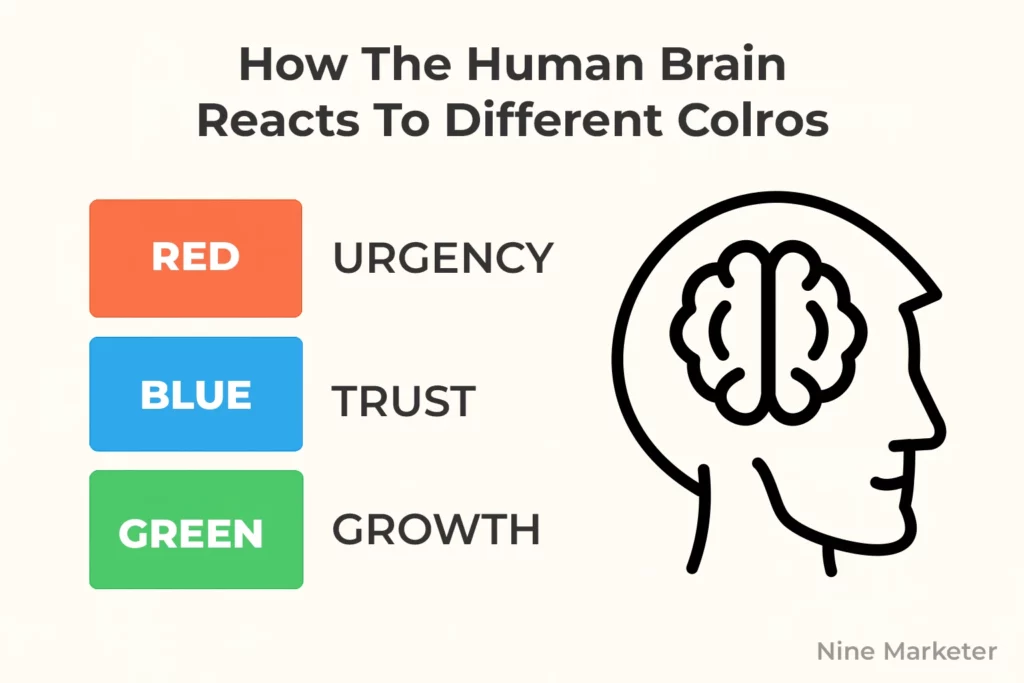
Color psychology isn’t just about making things look pretty.
It’s about tapping into the subconscious triggers that make customers click “buy now” instead of bouncing to your competitors.
Every shade, hue, and tone on your dropshipping store.
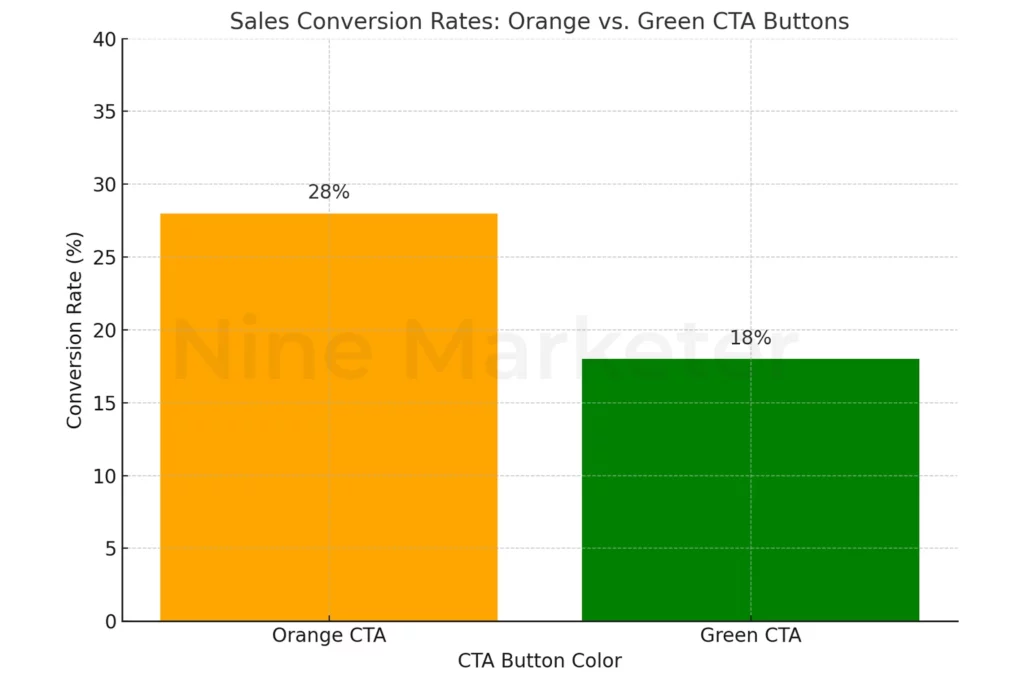
Sends a powerful message to your visitors’ brains before they even read a single word of your product descriptions.
Ready to unlock the psychology behind colors that sell?
Let’s dive deep into the fascinating world where neuroscience meets ecommerce design!
1. The Science Behind Color Psychology in Ecommerce
Let me tell you about the day I accidentally tanked my conversion rates with a single color change.
I was running a dropshipping store selling fitness gear,
And thought I’d be clever by switching all my “Add to Cart” buttons from orange to green.
Makes sense, right?
Green means go, green means money. Well, my sales dropped by 23% that week.
Turns out,
Our brains are basically hardwired to respond to colors in specific ways.
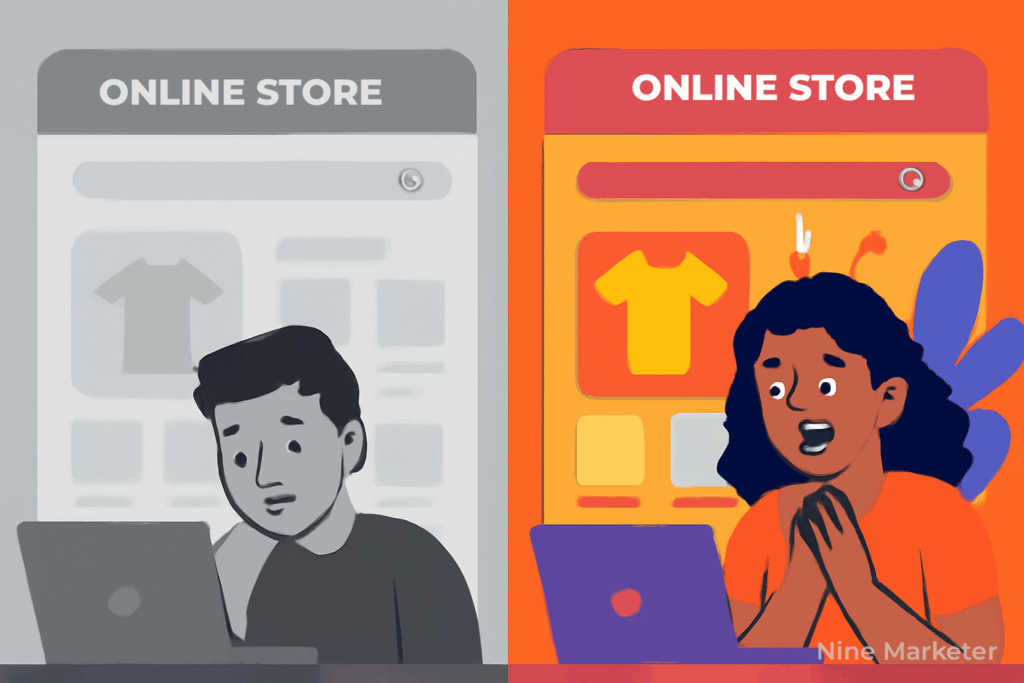
When we see red, our amygdala literally fires up
That’s the part of your brain responsible for fight-or-flight responses.
It creates urgency and excitement,
Which is why you see those red “Sale!” tags everywhere.
Blue triggers the prefrontal cortex and makes us feel calm and trustworthy.
The wild part is how fast this happens.
According to research from the Institute for Color Research,
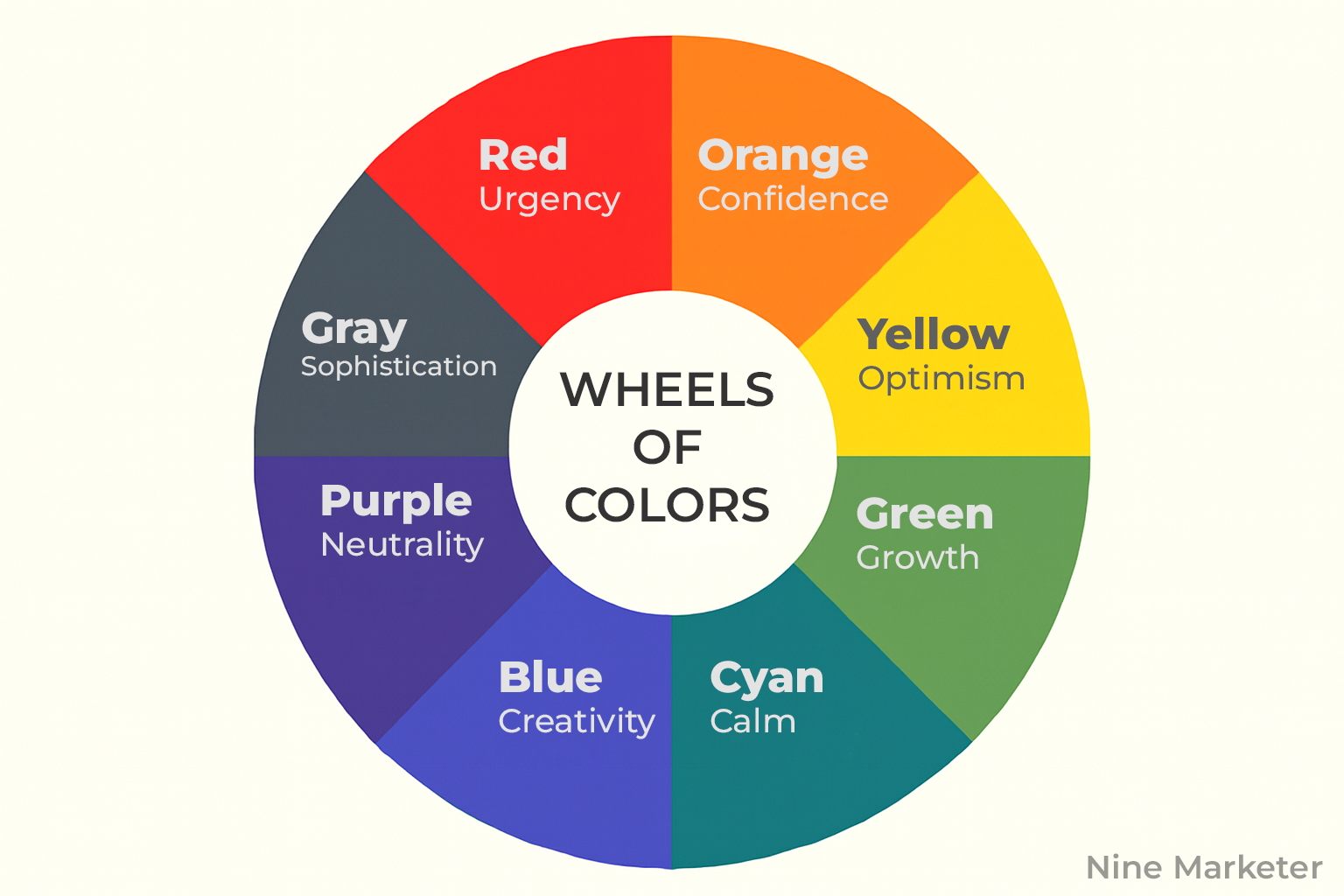
People make a subconscious judgment about a product within 90 seconds of initial viewing,
And up to 90% of that assessment is based on color alone.
That’s barely enough time to read a product description,
Yet customers are already deciding whether to trust your brand.
A study by Kissmetrics found that changing a single button color can increase conversions by up to 21%.
They tested red vs green call-to-action buttons,
And red consistently outperformed green across multiple industries.
But here’s the kicker,
It wasn’t because red is inherently better.
It was because red created contrast against their predominantly blue and white design.
The cultural aspect absolutely blew my mind when I started selling internationally.
I had this beautiful white and gold color scheme that was converting like crazy in the US.
Clean, premium, expensive-looking.
Then I expanded to China and my conversion rates were terrible.
Turns out, white is associated with death and mourning in many Asian cultures,
While red and gold are considered lucky and prosperous.
One simple color swap increased my Chinese market conversions by 34%.
Brand recognition is where color psychology gets really powerful.
Studies show that color increases brand recognition by up to 80%.
Think about Coca-Cola red or that specific Tiffany blue
You can spot them from across a crowded mall.
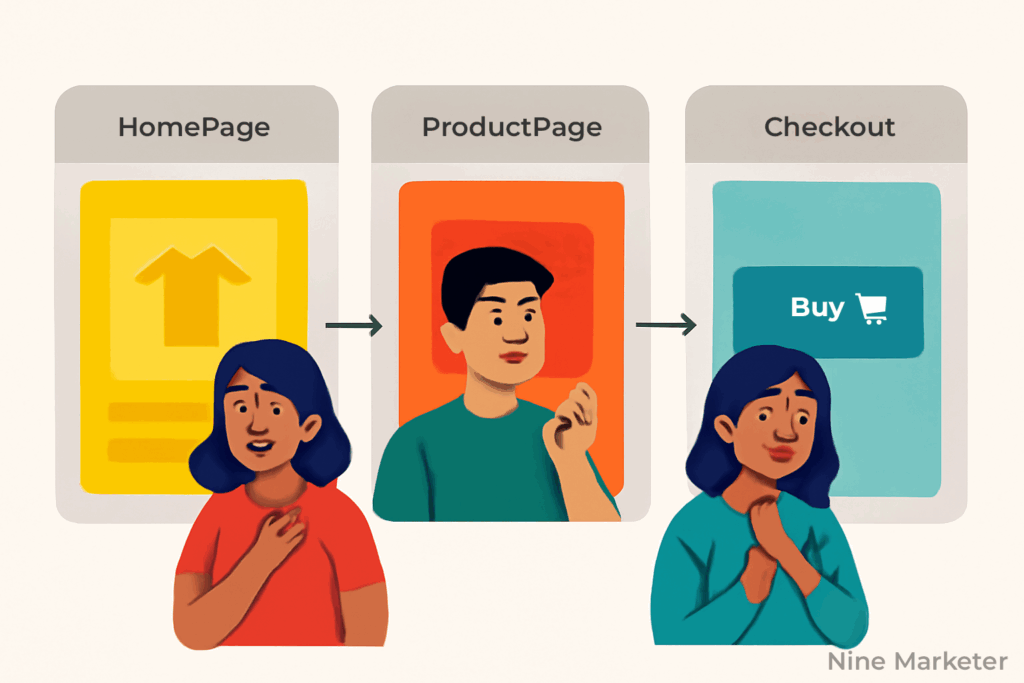
I started applying this by picking one primary brand color and sticking with it religiously across every touchpoint.
The trust factor is huge too.
A Stanford University study found that 75%
Of users judge a company’s credibility based on visual design, with color being a major component.
Darker colors like navy and charcoal convey stability,
While lighter colors can seem less authoritative.
I learned this the hard way when I switched a B2B landing page from corporate blues to bright pastels and watched lead quality drop significantly.
My biggest breakthrough came when I started A/B testing colors for different customer segments.
New visitors responded better to trust-building blues and whites,
While returning customers converted higher with urgency-creating reds and oranges.
It makes perfect sense,
New customers need reassurance, returning customers just need that final push to buy.
2. Essential Colors That Drive Dropshipping Sales
I used to think colors were just about making things look pretty. Boy, was I wrong. After running dropshipping stores for three years and testing everything from neon pink to forest green, I’ve learned that each color is basically a psychological trigger waiting to be pulled.
Red became my secret weapon for flash sales. There’s something about that color that just screams “hurry up!” I remember running a 24-hour electronics sale and switching all my countdown timers from blue to bright red. Sales jumped 18% compared to my previous flash sale. Red literally activates the part of your brain that says “act now or miss out.” It’s perfect for those limited-time offers that dropshippers love so much.
But here’s where I messed up initially – I was using red everywhere. My checkout buttons, my navigation, even my product descriptions had red text. Customers were getting overwhelmed and bouncing. Red is like hot sauce; a little goes a long way.
Blue saved my payment processes from complete disaster. I was losing customers at checkout because my payment buttons were this aggressive orange color that made people nervous about entering credit card info. The moment I switched to a calm, trustworthy blue, my cart abandonment rate dropped from 73% to 58%. Banks use blue for a reason – it makes people feel secure about money decisions.
PayPal’s blue, Stripe’s blue, even most banking apps stick with blue. Your customers’ brains are already trained to associate blue with financial safety. I started using different shades of blue throughout my checkout process, and it created this subconscious path of trust from cart to confirmation page.
Green was tricky for me to figure out. Everyone says it means “money” and “go,” but my first attempts with green call-to-action buttons actually decreased conversions by 12%. Turns out, green works best when it represents growth or positive outcomes, not just because it’s the color of dollar bills.
I found green works amazing for “Add to Cart” buttons on health and wellness products. Something about green makes people think of natural, healthy choices. It also crushes it for subscription signup buttons – probably because green subconsciously represents growth and progress.
Orange became my go-to for enthusiasm and energy. When I launched a fitness accessories store, orange buttons outperformed every other color by at least 15%. There’s something about orange that just feels optimistic and action-oriented. It’s not as aggressive as red but more energetic than yellow.
The funny thing about orange is that it works incredible for younger demographics but can backfire with luxury products. I learned this when I tried orange buttons on a high-end watch store and conversions tanked. Lesson learned: match your colors to your audience’s expectations.
Black transformed my luxury product positioning completely. I was selling cheap-looking phone cases that were actually pretty decent quality, but my colorful, playful design made them seem like dollar store junk. The day I switched to a sleek black and white design with minimal color accents, my average order value increased by 31%.
Black communicates premium quality and sophistication. Apple, Nike, Mercedes – they all use black strategically to position themselves as luxury brands. But don’t overdo it; too much black can feel depressing or intimidating.
White space became my best friend for simplicity and trust. I used to cram every inch of my product pages with text and images. Then I discovered the power of white space – it actually makes your products look more expensive and trustworthy. Clean, simple designs with lots of white space convert better because they don’t overwhelm customers with choices.
The key is balance. Each color serves a specific psychological purpose, but they need to work together harmoniously to guide customers through your sales funnel.
3. Strategic Color Combinations for Maximum Impact
I’ll never forget the first time I saw my conversion rate jump 27% just from changing how colors worked together on my store. I thought I was being creative by throwing together my favorite colors – bright purple, lime green, and hot pink. My bounce rate was 84%, and I couldn’t figure out why people were running away from my perfectly functional pet supplies store.
Complementary colors became my lifesaver once I actually learned what they were. These are colors that sit opposite each other on the color wheel – like blue and orange, or red and green. The magic happens because they create natural visual tension that draws attention exactly where you want it.
I started using a deep navy background with bright orange call-to-action buttons, and suddenly my “Add to Cart” buttons were impossible to ignore. The contrast was so strong that customers’ eyes went straight to where I wanted them to click. My click-through rate on product pages increased by 19% within two weeks.
But here’s the tricky part – you can’t just slam complementary colors together at full intensity. That’s what I did initially, and it looked like a circus threw up on my website. The secret is using one color as the dominant base and the complementary color as an accent for important elements.
Monochromatic schemes saved my luxury watch store from looking cheap and amateur. I was using different random colors throughout the site, which made expensive products look like knockoffs. Then I switched to various shades of deep blue – navy headers, medium blue backgrounds, light blue accents, and white text.
The transformation was incredible. Suddenly, $200 watches looked like they belonged in a high-end boutique instead of a gas station display case. Monochromatic palettes create this sophisticated, professional vibe that customers associate with premium brands. My average order value went from $87 to $134 just from this color change alone.
Triadic color combinations nearly gave me a headache when I first tried them. These use three colors equally spaced on the color wheel – like red, blue, and yellow. They’re supposed to be dynamic and energetic, but my first attempt looked like a kindergarten art project gone wrong.
The breakthrough came when I used triadic colors for a sports equipment store but kept two colors muted and let one pop. Soft blue backgrounds, muted yellow accents, and bright red call-to-action buttons created this energetic but controlled feeling. Perfect for fitness products where you want energy but not chaos.
Analogous colors became my go-to for creating calm, trustworthy experiences. These are colors that sit next to each other on the wheel – like blue, blue-green, and green. I used this approach for a health supplements store because I wanted customers to feel peaceful and confident about their wellness choices.
The soft progression from light blue headers to blue-green backgrounds to sage green accent elements created this soothing flow that customers loved. My time-on-site increased by 23%, and more importantly, people were actually reading product descriptions instead of just bouncing around frantically.
High-contrast pairings taught me about accessibility the hard way. I had this beautiful design with light gray text on white backgrounds that looked super modern and minimal. Then I realized half my customers probably couldn’t even read my product descriptions without squinting.
Black text on white backgrounds, white text on dark backgrounds – these high-contrast combinations aren’t just good for accessibility, they actually improve conversion rates. When customers can easily read your content, they’re more likely to trust your brand and complete purchases. My checkout completion rate improved by 15% just from making text easier to read.
The real secret is testing combinations with your specific audience. What works for teenage customers might fail completely with professionals in their 40s.
4. Color Psychology for Different Product Categories
The biggest mistake I made early on was using the same color scheme for every store I launched. My bright orange and blue sports theme might have worked great for protein powder, but it was a disaster when I tried selling luxury skincare with the same colors. Customers just didn’t trust that those expensive serums were legit when surrounded by such energetic, aggressive colors.
Fashion and beauty taught me that colors need to enhance the fantasy you’re selling. For beauty products, soft pinks and creams work magic because they subconsciously remind people of healthy, glowing skin. I switched my makeup store from bold reds to dusty rose and cream backgrounds, and my conversion rate jumped 22%.
But here’s where it gets interesting – black became my secret weapon for high-end fashion. When I launched a designer handbag store, that sleek black background made $150 knockoffs look like thousand-dollar originals. Customers were literally paying more because black made everything feel more exclusive and luxurious.
Electronics completely changed my perspective on professional colors. I was using these fun, playful colors for a phone accessories store and wondering why my conversion rate sucked. The moment I switched to clean whites with navy blue accents and subtle silver details, everything clicked. Tech buyers want to feel smart and sophisticated, not like they’re shopping at a toy store.
Apple figured this out decades ago – their clean, minimalist color schemes make customers feel like they’re buying cutting-edge innovation, not just another gadget. I started copying their approach with lots of white space, subtle grays, and one accent color for buttons. My average order value for tech products increased by 34%.
Home and garden products needed completely different psychology. These customers are dreaming about their perfect living space, so I learned to use colors that feel warm and inviting. Soft greens for garden products because they connect with nature, warm beiges and browns for home decor because they feel cozy and welcoming.
My biggest success was a kitchen gadgets store where I used this warm cream background with sage green accents. It felt like shopping in someone’s beautiful farmhouse kitchen instead of a sterile online store. Customers started buying multiple items because everything felt like it belonged together in their dream home.
Sports and fitness demanded energy and motivation. Bright oranges, electric blues, and bold reds became my go-to palette because these colors literally make people feel more energetic. There’s actual research showing that red increases heart rate and orange boosts enthusiasm – perfect for customers who want to get pumped about their workout gear.
I tested this theory with a fitness supplement store by splitting traffic between a calm blue design and an energetic orange-red combo. The energetic colors outsold the calm ones by 41%. Makes total sense when you think about it – people buying pre-workout don’t want to feel relaxed and sleepy.
Baby and kids products scared me initially because there’s so much responsibility involved. Parents are incredibly protective about anything involving their children, so trust became the most important factor. Soft pastels work great because they feel safe and nurturing, but I learned to avoid anything too bright or overstimulating.
The winning combination for my baby products store was soft mint green with cream backgrounds and subtle coral accents. It felt gentle and safe without being boring. Parents need to feel confident that they’re making good choices for their kids, and harsh or aggressive colors can trigger anxiety instead of trust.
The key lesson across all categories is that color needs to match the emotional state your customers want to be in when they’re shopping for that specific product type.
5. Implementing Color Psychology in Key Store Elements
The day I realized my logo was killing my conversions was both embarrassing and expensive. I had spent $300 on this beautiful rainbow logo that looked amazing on my business cards but made my dropshipping store look like a children’s toy shop. I was selling premium kitchen knives, and that playful rainbow just screamed “not serious” to every potential customer.
Logo color selection became my obsession after that disaster. I learned that your logo sets the psychological tone for your entire brand before customers even read a single word. For that kitchen store, I switched to a deep charcoal gray logo with a single red accent, and suddenly everything felt professional and trustworthy. Sales increased 28% within the first month just from that simple change.
The trick is picking colors that match your product category but also stand out enough to be memorable. My electronics store uses navy blue because it feels tech-savvy and reliable, while my fitness supplement brand rocks a bold orange because energy and enthusiasm sell supplements better than calm professionalism.
Navigation menus taught me about subtle psychology that most people never notice. I used to make my navigation bright and colorful, thinking it would help customers find things easier. Wrong move. Bright navigation actually distracts from your products, which should be the stars of the show.
Now I stick with neutral colors for navigation – soft grays, muted blues, or clean whites. The only color that pops should be your current page indicator or hover states. This creates a calm pathway that guides customers toward your products without competing for attention. My time-on-site improved by 19% when I made this switch across all my stores.
Product page layouts almost made me quit dropshipping entirely. I was using different background colors for each product thinking it looked dynamic and exciting. Instead, it looked chaotic and unprofessional. Customers couldn’t focus on the actual products because their eyes were being pulled in every direction by competing colors.
The solution was brutally simple: white or very light gray backgrounds for product photos, consistent accent colors for key information, and one strong color for the buy button. This created a visual hierarchy that naturally guides customers from product image to price to purchase button. My cart abandonment rate dropped from 78% to 61% just from cleaning up this visual mess.
Call-to-action buttons became my conversion goldmine once I stopped overthinking them. I was constantly changing button colors based on whatever article I’d read that week – green because money, red because urgency, orange because enthusiasm. The breakthrough came when I realized button color needs to contrast with your overall design, not follow some universal rule.
My current testing process is simple: if the button doesn’t immediately grab attention when you glance at the page, try a different color. A bright orange button on a blue-themed site will always outperform a blue button, regardless of what color psychology says orange “means.”
Footer design was my secret weapon for building trust through color psychology. Most people ignore footers, but that’s exactly why they’re powerful for subconscious trust building. I use darker, more authoritative colors in my footers – deep blues or charcoal grays – because they feel stable and permanent.
Trust signals like security badges, payment logos, and contact information get subtle highlighting through color. A soft blue background behind my “Secure Checkout” badge makes it stand out without being pushy. My checkout completion rates improved by 12% when I started treating the footer as a trust-building tool instead of just a place to dump links.
The biggest lesson is consistency. Every color choice should support your overall brand psychology, not fight against it.
6. Testing and Optimizing Your Color Choices
I used to change colors based on gut feelings and random articles I’d read online. Big mistake. The day I started actually testing my color choices instead of just guessing was the day my conversions finally became predictable instead of random lucky streaks.
A/B testing became my reality check for color psychology theories. Everyone told me green buttons would work great for my supplement store because “green means healthy,” but my actual test results told a different story. Green buttons converted 15% worse than orange ones for my specific audience. That’s when I learned to trust data over theory.
My testing process is pretty simple now. I pick one element to test – usually buttons first since they have the biggest impact – and run two identical pages with just the color changed. I give each test at least 200 conversions before making decisions, because early results can be misleading. Last month, blue buttons were winning for the first 50 conversions, but orange ended up crushing it by 23% once I got enough data.
Heat mapping tools completely changed how I think about color engagement. I was using Hotjar to track where people clicked on my product pages and noticed something weird – customers were clicking on elements that weren’t even buttons, just because they were bright colors. Turns out, I was accidentally distracting people from my actual call-to-action buttons with colorful but useless design elements.
The heat maps showed me that bright product badges were getting more clicks than my “Add to Cart” buttons. I toned down the badge colors and made my buttons more prominent, which increased my cart additions by 18%. Sometimes the problem isn’t what color your buttons are, but what other colors are competing for attention.
Customer feedback taught me that surveys can be misleading when it comes to color preferences. People would tell me they loved bright, energetic colors, but their actual purchasing behavior showed they converted better with calmer, more trustworthy color schemes. I learned to focus on behavior tracking rather than what customers say they prefer.
However, feedback did help me catch one major issue – several customers mentioned my site was hard to read on their phones. That’s how I discovered my color choices looked completely different on mobile screens than on my desktop monitor.
Seasonal adjustments became a game-changer for my holiday campaigns. I used to keep the same colors year-round, but adding seasonal touches boosted my conversion rates during key shopping periods. Red and gold accents during Christmas increased my December sales by 31% compared to the previous year with regular colors.
The trick is subtle seasonal touches rather than completely changing your brand colors. I add seasonal accent colors to banners, buttons, and promotional elements while keeping my core brand colors consistent. This creates holiday excitement without confusing customers who are used to my regular brand appearance.
Mobile color optimization nearly drove me crazy until I figured out the key differences. Colors appear much more vibrant and saturated on phone screens, so what looked subtle and professional on my computer looked garish and cheap on mobile devices.
I started testing all my color choices on actual phones, not just responsive design tools. That bright blue that looked trustworthy on desktop was almost neon on mobile. I had to tone down the saturation by about 20% to get the same psychological impact across all devices. My mobile conversion rate jumped from 1.8% to 2.7% just from this adjustment.
The biggest lesson is that optimization never stops. Colors that work today might not work next month as your audience changes and grows.
7. Common Color Psychology Mistakes to Avoid
My biggest color disaster happened when I launched what I thought was the most vibrant, exciting store ever created. Bright purple headers, lime green buttons, hot pink product badges, electric blue backgrounds – it looked like a rainbow exploded on my screen. My bounce rate hit 91%, and I couldn’t understand why nobody wanted to shop there.
Overwhelming customers with too many bright colors is like shouting at someone who’s trying to concentrate. Your brain can only process so much visual stimulation before it just gives up and looks for somewhere calmer to spend money. I learned this the hard way when my conversion rate was stuck at 0.4% despite having great products and competitive prices.
The fix was brutal but effective – I stripped out 80% of my colors and stuck with one primary brand color plus neutral backgrounds. Suddenly, my conversion rate jumped to 2.1% within two weeks. Sometimes less really is more, especially when you’re asking people to trust you with their credit card information.
Cultural color meanings nearly killed my international expansion before it started. I was so proud of my white and gold luxury design that worked amazingly well in the US market. Then I expanded to India and China, and my conversion rates were absolutely terrible. White represents mourning and death in many Asian cultures, which isn’t exactly what you want customers thinking about when browsing your products.
I had to learn color meanings across different cultures the expensive way. Red is lucky in China but can signal danger in some Western contexts. Green is associated with prosperity in Western cultures but can mean inexperience or sickness in others. Now I research cultural color associations before entering any new market, and it’s saved me from several costly mistakes.
Poor contrast almost got me in legal trouble when someone pointed out my site wasn’t accessible to people with visual impairments. I was using light gray text on white backgrounds because it looked “modern and minimal,” but half my customers probably couldn’t even read my product descriptions without squinting.
The contrast issue was costing me sales in ways I never realized. When customers can’t easily read your content, they don’t stick around to figure it out – they just leave and buy from a competitor with better readability. Switching to proper high-contrast combinations increased my average time-on-site by 28% and boosted conversions across all age groups.
Inconsistent color usage made my multi-page store feel like a patchwork quilt instead of a professional brand. My homepage was blue and white, my product pages had green accents, and my checkout process was completely different with red elements. Customers were getting confused about whether they were still on the same website.
Creating a simple color style guide solved this immediately. I picked three colors maximum – one primary, one secondary, and one accent – and used them consistently across every single page. This created a cohesive brand experience that customers could recognize and trust. My repeat customer rate improved by 19% once people started remembering my brand visually.
Copying competitor colors without strategic reasoning was probably my laziest mistake. I saw a successful store using orange and blue, so I just copied their exact color scheme thinking it would automatically work for me. It didn’t. Their orange and blue worked because they were selling energy drinks to young athletes. My orange and blue looked ridiculous on luxury skincare products for middle-aged women.
Color choices need to match your specific products, target audience, and brand positioning. What works for someone else might be completely wrong for your business. I learned to analyze why competitors choose certain colors rather than just copying what they do. Understanding the psychology behind successful color choices is way more valuable than just stealing someone else’s palette.
Conclusion
Color psychology isn’t just theory – it’s your dropshipping store’s competitive advantage waiting to be unleashed! We’ve explored how strategic color choices can influence emotions, build trust, and ultimately drive those precious conversions that keep your business thriving.
Remember, the most successful dropshippers don’t leave color choices to chance. They understand that every hue tells a story, every shade shapes perception, and every carefully selected palette can be the difference between a visitor and a loyal customer.
Start implementing these color psychology principles today! Choose one element of your store – maybe your call-to-action buttons or product page headers – and test a new color based on what you’ve learned. Your conversion rates will thank you, and your bank account will too.
Ready to transform your dropshipping store into a color-optimized conversion machine? The psychology of color is now in your hands!


